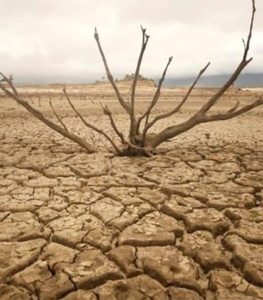Pakistan on the frontline of climate-driven migration
Extreme weather, diminishing agriculture, sea erosion, and lingering dry spells have caused widespread migration within Pakistan in the past decade, new reports say.
More than two million people were displaced by floods that inundated one-fifth of the country in 2010, triggering mass migration to cities from rural Pakistan.
 Of that figure, almost 70 per cent did not go back to their homes and permanently settled in big cities to make a living because of the destruction to their farmlands, according to a report from Pakistan’s Ministry of Climate Change.
Of that figure, almost 70 per cent did not go back to their homes and permanently settled in big cities to make a living because of the destruction to their farmlands, according to a report from Pakistan’s Ministry of Climate Change.
The report said seasonal, long-term and permanent migrations mainly due to drought and floods, had taken place in southern, south western, and north eastern Pakistan in the last ten years.
About 700,000 people migrate to big cities from rural Pakistan annually on long-term, and permanent basis, the report said.
Pakistan recently has been placed fifth on the list of countries vulnerable to climate change by the Global Climate Risk Index for 2020.
Pakistan lost 9,989 lives, suffered economic losses worth $3.8 billion and witnessed 152 extreme weather events from 1999 to 2018, according to the index.
The data also indicates the government, as well as the world, is not taking enough measures to cope with challenges and risks climate change poses to Pakistan.
It shows Pakistan is losing more than $4 billion in GDP each year due to climate change disasters.
According to another report from the Climate Change Ministry, the country lost $80 billion from 1996 to 2016 because of climate change calamities.
Most of the climate migration is taking place in four provinces — Sindh, Punjab, Khyber Pakhtunkhaw (KP), and Balochistan – and the northern Gilgit-Baltistan region.
“Almost 50 per cent of Pakistan’s population is increasingly becoming vulnerable to climate change, which may trigger another wave of mass migration”, the report said.
The ministry has no official statistics but it is believed up to 20 per cent of the country’s total 210 million population had moved to big cities from rural areas from the four provinces since 2010 floods.
In the capital Islamabad, the city’s population increased to more than 2.2 million from around 500,000 in 2010.
Other reports say drought has gradually shrunk the agriculture and herding in southern Thar Desert and several districts of southern Punjab and south western Balochistan provinces, propelling a mass migration to the big cities in recent years.
A combination of sea erosion and intrusion also has submerged several Indus river delta islands, in Sindh province in recent decades forcing local communities to migrate to the nearby city of Karachi.
The city of Keti Bandar, once a port on the Arabian Sea, has been relocated four times in the last 40 years due to rising sea levels.
Normally, rains mitigate impacts of dry spells, but instead of giving a relief, unseasonal rains have prolonged the drought-like situation in several areas.
The Thar Desert, which forms a natural boundary with neighbouring India, spans a region of 200,000 square kilometres, has a population of 1.5 million and is ranked by the World Food Program as the most food insecure region in the country.
Elsewhere in Pakistan, melting glaciers are wreaking havoc on local populations.
In the northern scenic Gilgit-Baltistan region, which borders China, landslides and glacier lake outburst floods (GLOFs), which are the outcome of global warming, have submerged scores of villages and destroyed infrastructure, forcing local communities to move to other areas.
Thousands of people were displaced after a massive landslide blocked the River Hunza creating a natural lake, Attabad, in 2010.
The rising water immersed scores of villages, farmhouses and a 12-mile stretch of Karakorum Highway, which connects Pakistan with China.












